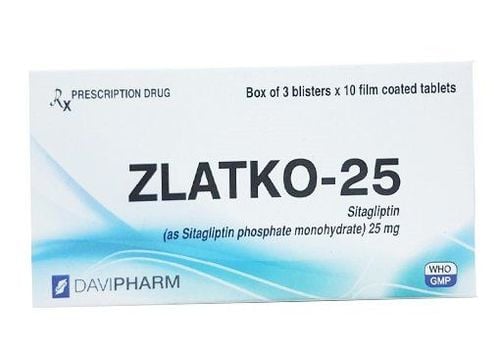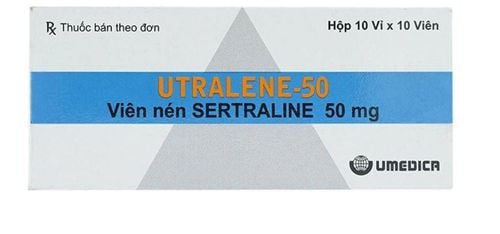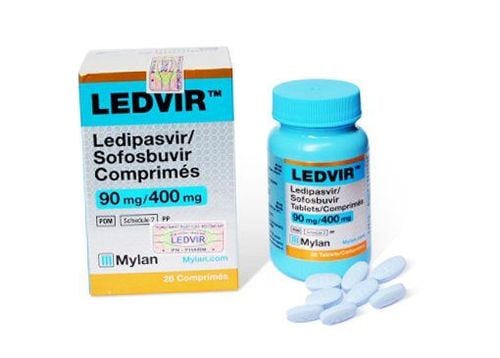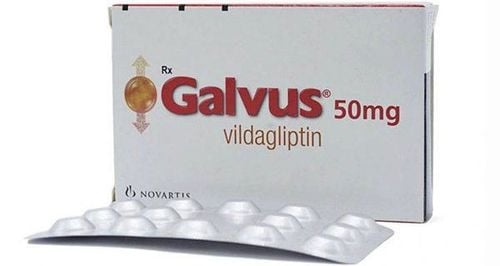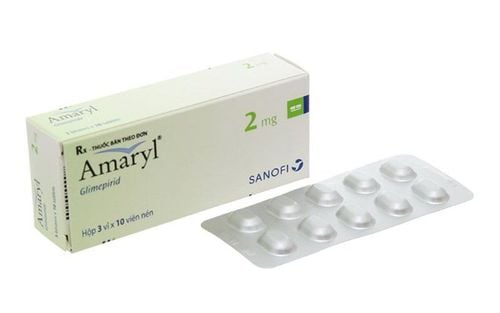This is an automatically translated article.
Goldagtin has the active ingredient Vildagliptin, an antidiabetic drug belonging to the group of dipeptidyl-peptidase-4 inhibitors. So what are the uses, doses and precautions when using Goldagtin?1. What is Goldagtin?
The active ingredient in Goldagtin is Vildagliptin, a member of the dipeptidyl-peptidase-4 (DPP-4) class of inhibitors. Vildagliptin is a rapid inhibitor of DPP-4 activity. Inhibition of DPP-4 leads to increased levels of the incretin hormones GLP-1 (glucagon-like peptide 1) and GIP (glucose-dependent insulin-stimulating polypeptide) both fasting and postprandial. By increasing levels of the hormone incretin, Vildagliptin helps to increase glucose-dependent insulin secretion and decrease glucagon secretion, leading to improved glycemic control. In addition, an increase in incretin levels increases the feeling of fullness and decreases the rate of gastric emptying.2. Uses of Goldagtin
Goldagtin is indicated in the treatment of type 2 diabetes mellitus monotherapy (if the patient is not adequately controlled by diet, exercise alone and metformin is not appropriate), or in combination with another antidiabetic agent if current treatment does not provide adequate glycemic control. Goldagtin is contraindicated in patients with hypersensitivity to Vildagliptin or to any of its ingredients, patients with type 1 diabetes, ketoacidosis, and pregnant and lactating women.3. Dosage of the drug Goldagtin
Adults:
When used as monotherapy or in combination with other antidiabetic drugs such as Metformin, Thiazolidinedione group, Insulin: The recommended dose of Goldagtin is 50 mg x 2 times/day (morning and evening). . When used in dual combination with Sulfonylurea: The recommended dose of Goldagtin is 50mg once daily in the morning. At the same time, a reduction in the dose of the sulphonylurea may be considered to reduce the risk of hypoglycemia. Vildagliptin doses > 100 mg are not recommended. Children:
Vildagliptin is not recommended for children and adolescents under 18 years of age because safety and efficacy have not been established in this population.
Others
Elderly: No dose adjustment of Goldagtin is required. Renal impairment: Patients with mild renal impairment (creatinine clearance ≥ 50ml/min): No dose adjustment of Goldagtin is required. For patients with moderate to severe renal impairment or end-stage renal disease (ESRD), the recommended dose of Goldagtin is 50 mg once daily. Hepatic impairment: Vildagliptin is not recommended for use in patients with hepatic impairment.
4. Goldagtin side effects
Patients using Goldagtin may experience undesirable effects including: Patients using Goldagtin may experience undesirable effects including:
Common: Dizziness. Uncommon: Hypoglycaemia, headache, peripheral edema, constipation, arthralgia. Rare: Upper respiratory tract infection, cough, nasopharyngitis. Frequency not known: Pancreatitis, hepatitis (reversible with discontinuation of drug), abnormal liver function tests, myalgia, urticaria, rash, peeling skin lesions and bullae.
5. What are the precautions when using Goldagtin?
Rare cases of liver dysfunction have been reported. In these cases, the majority of patients were asymptomatic, had no sequelae, and liver function test results returned to normal after discontinuation of the drug. It is recommended that liver function tests be performed prior to initiation of therapy and monitored during treatment with Vildagliptin every three months for the first year and periodically thereafter. Patients with elevated transaminase levels should undergo a second liver function assessment and follow up with regular tests until parameters return to normal. Vildagliptin should be discontinued in patients with an increase in AST or ALT of 3 times the ULN or more, jaundice, or other signs suggestive of impaired liver function. Vildagliptin is not recommended in patients with grade IV heart failure. Skin lesions, including blistering and ulceration, have been reported in toxicological studies. Although the observed rate of skin lesions was not increased in clinical trials, experience in patients with diabetic skin complications is limited. In addition, there have been reports of skin lesions such as blistering and scaling after the drug was placed on the market. Therefore, skin disorders should be monitored when using Goldagtin. Vildagliptin use is associated with an increased risk of developing acute pancreatitis. Patients should be informed of symptoms of acute pancreatitis. If pancreatitis is suspected, Goldagtin should be discontinued; If acute pancreatitis has been confirmed, Goldagtin should not be restarted. Goldagtin should be used with caution in patients with a history of acute pancreatitis. Pregnancy: There are no adequate data on the use of Vildagliptin in pregnant women. Animal studies have shown reproductive toxicity at high doses; however, the potential hazard to humans has not been identified. In general, Vildagliptin should not be used during pregnancy. Lactation: It is not known whether Vildagliptin is excreted in human milk. Therefore, Goldagtin should not be used during lactation.6. Goldagtin overdose and treatment
Information regarding overdose with Vildagliptin is limited. According to the study, possible overdose symptoms with Vildagliptin 400mg dose include myalgia, fever, transient paresthesias, edema and increased lipase levels. At 600 mg, symptoms may include edema of the feet and hands, paralysis or increased levels of creatine phosphokinase, aspartate aminotransferase, C-reactive protein, and myoglobin levels. All symptoms usually resolve spontaneously after discontinuation of the drug. In case of serious overdose, supportive measures should be taken.7. Drug interactions
Simultaneous use of Goldagtin and some drugs may cause interactions, affect the therapeutic effect and/or increase the toxicity of the drug. In general, Vildagliptin is unlikely to cause drug interactions because Vildagliptin is not a substrate of cytochrome P450 and neither inhibits nor induces CYP450 enzymes. It is best for patients to inform their healthcare professional of all prescription and nonprescription medications and dietary supplements they are taking. Here are some drug interactions to watch out for when using Goldagtin:The hypoglycemic effect of Vildagliptin may be reduced by a number of drugs, including thiazide diuretics, corticosteroids, thyroid products, and drugs. sympathetic strength. The hypoglycemic effect of Vildagliptin may be increased when used in combination with Moxifloxacin, Grepafloxacin, Ciprofloxacin, Trovafloxacin,... The risk and severity of hypoglycemia may be increased when Lipoic Acid is used in combination. compatible with Vildagliptin. Above is the general information about the drug Goldagtin. To ensure optimal effectiveness of the drug and prevent side effects, patients should consult their doctor or pharmacist before use.





